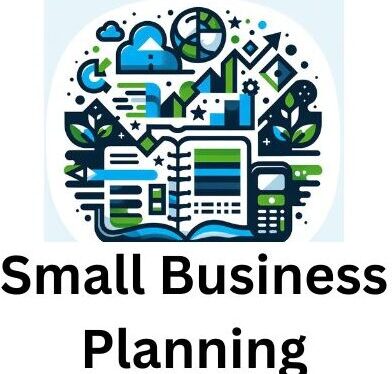Financial risk is something every small business owner thinks about, whether it’s right at launch or after a few years of steady growth. The stakes can feel higher with your finances on the line and decisions impacting your livelihood. Knowing how to spot financial risks early is key to keeping your business moving in the right direction. This guide will show you how to recognize these risks, size them up, and put practical steps in place to help you manage them with confidence.

Why Identifying Financial Risks Should Be On Your Radar
Every small business faces some degree of risk tied to its finances. Whether you’re running a coffee shop or an online store, there are cash flow hiccups, changing costs, and even market changes that can create problems if you don’t see them coming. Keeping an eye out for risk isn’t just about avoiding disaster; it’s about making sure you can ride out slow periods, grab new opportunities, and keep your business steady.
Most of the time, problems start as manageable issues. If you catch them early, you have more options to fix them, and you avoid nasty surprises. For instance, a drop in sales in one season might just be a blip, but if it’s part of a bigger trend, you want to know about it quickly. According to research from the U.S. Small Business Administration, about a third of small businesses close because of cash flow problems, so spotting risk ahead of time absolutely makes a difference.
Financial risk comes from several directions: unpredictable expenses, customers not paying on time, supply chain problems, and even bigger changes in the economy. Figuring out these areas is the first step to protecting yourself.
Different Types of Financial Risks Small Businesses Face
Every business looks a little different, but financial risks tend to fall into a few familiar categories. Here are some of the main ones that pop up time and again:
- Cash Flow Risk: Trouble paying bills because money isn’t coming in as fast as it’s going out.
- Credit Risk: Customers or clients who don’t pay what they owe in a timely manner, or suppliers who suddenly need to be paid sooner.
- Market Risk: Sales drop because customers’ tastes change or competition increases.
- Operational Risk: Problems with your systems, equipment breakdowns, or mistakes that end up costing money.
- Interest Rate Risk: Loans with variable rates get more expensive if interest rates go up.
- Legal or Regulatory Risk: Laws change, and you end up needing to pay new fees or face fines.
Recognizing where your business is most exposed helps you focus your attention and set up smart ways to handle problems before they get bigger.
How To Spot Financial Risks In Your Small Business
Finding financial risk might sound intimidating, but it’s really about paying attention to key signals and putting in some simple processes. Here’s what you can do to stay on top of things:
- Review Your Finances Regularly: Check your bank statements, financial reports, and cash flow every month. Look for sudden changes, growing expenses, or slow sales. I have found that it is helpful to put financial statements on a comparative spreadsheet. It is easier to spot trends that way.
- Keep An Eye On Accounts Receivable: If customers take longer to pay, that’s a major warning sign. Late payments can throw off your cash flow.
- Monitor Inventory and Suppliers: Supply chain hiccups or rising costs from suppliers put pressure on your profits. Track delivery times and look for emerging patterns. If possible you should have more than one supplier for critical inventory items.
- Track Your Expenses: Costs often creep up. Compare your current spending to last month or the previous year; any spikes should get your attention. The comment I made about putting financial statements in a trend analysis also applies here.
- Listen To Your Customers: Drops in satisfaction, returns, or online reviews are early signals that something might be wrong with your sales or service. It is very helpful for businesses to have a short satisfaction survey sent out with billings.
Building a Financial Risk Assessment for Your Business
A financial risk assessment puts everything out in the open and gets you to ask a few honest questions about what could go wrong. It’s not about worrying, but about seeing which issues deserve some extra attention. Here’s a simple way to break it down:
- List your main revenue sources and biggest expenses.
- For each one, ask: What could disrupt this? Who depends on it? What are my backups?
- Give each risk a score for how likely it is and how much it could hurt your business.
- Start with the risks receiving the highest scores first. For instance, if a single client brings in most of your revenue, think about how you could find new clients or mix in some variety.
You can sketch this out in a spreadsheet or on paper. The most important thing is being honest about where trouble could begin and which issues should get your immediate attention.
Smart Ways To Manage Financial Risks
So, you’ve spotted some risks—what’s next? Managing financial risk means putting practical solutions in place before things go sideways. Here are some proven strategies for small businesses:
- Build a Cash Buffer: Keeping a few months’ worth of expenses set aside can help you sleep at night. Even a small buffer can lower your stress during a slow patch. When I had the consulting business I would always urge my clients to apply for a line of credit. Interest is paid only when you use it and repayment terms can be flexible. It provides a great security blanket to cover short term issues.
- Set Payment Terms and Stick To Them: Have clear contracts with customers and follow up quickly if a payment is late. This steadies your cash flow.
- Mix In Some Variety In Revenue Streams: If one product or client brings in most of your income, start looking for new ways to balance things out. Even small extra sources of revenue can lower your risk significantly.
- Monitor Your Credit Regularly: Know your business credit standing and keep debts in check, so you have good options if you ever need a loan.
- Connect With Multiple Suppliers: It’s smart to maintain more than one supplier for your crucial materials, giving you options if something changes.
Additionally, set reminders to review insurance policies yearly. I like to use Insurance Brokers. They will make sure you are aware of any changes in the market and typically go after competitive quotes each year. This makes sure you’re protected for the right things—like property damage or liability—without paying extra for what you don’t need every year.
Common Financial Risk Factors for Small Businesses
Here are a few of the main triggers for financial trouble small businesses face regularly:
- Low cash reserves during slow sales seasons
- High customer concentration (one or two clients make up most of your money)
- Falling behind on tax obligations or facing newly introduced regulatory changes
- Relying on a single supplier for crucial inventory
- Taking on excessive debt without a strong payoff plan
Spotting these factors early makes it much easier to get help, adjust your approach, or use tools like a business credit line to handle bumps in the road before they turn into emergencies.
Small Business Financial Risk Management Tools
Today, there are plenty of resources and tools you can use to help spot and handle risks more effectively. Here are a few worth checking out:
- Bookkeeping and Accounting Software: Tools such as QuickBooks or Xero make it straight forward to track cash flow and pick up on issues early. These are two of the most well known products. I recommend QuickBooks. I have successfully implemented it at several clients. I have found that it has excellent tutorials and great customer support. If you would like additional information about QuickBooks please click on the link.
- Spreadsheets: Even a basic Excel or Google Sheets document can help you track key markers (like late payments or expenses climbing) over time.
- Credit Monitoring Services: Services like Nav or Dun & Bradstreet let you monitor your credit and give tips for boosting it.
- Professional Financial Advisors: Even a once- or twice-a-year check-in with a CPA or business finance expert can give you another perspective and highlight things you might overlook. I recommend using a CPA for annual tax preparation and filing. They usually keep up to date with your business and will recommend things as they occur.
Your specific needs will determine the best mix, but keeping tabs on the basics is a huge help in avoiding common financial problems.
FAQ – Small Business Financial Risks
These are some of the most common questions that pop up in conversations about small business finances and risk:
Question: How often should I review my business finances for risk?
Answer: Once a month is a solid starting point. Things change fast in business, and regular check-ins let you spot problems before they snowball.
Question: What’s the biggest financial risk for most small businesses?
Answer: Running out of cash is the main issue. Even if you’re growing, if you can’t cover a slow month’s expenses, it’s tough to bounce back.
Question: Can insurance protect my business from financial risk?
Answer: Insurance helps with certain issues, like property damage or lawsuits, but it won’t save you from cash flow snags or wider market changes. Think of it as protection for surprises—not regular money issues.
Question: What if I have no clue where my risks are?
Answer: Start by looking back at past hiccups—late payments, sales drops, or surprise bills. Getting advice from a financial advisor or trusted mentor can also brighten up the picture.
Wrapping Up: A Quick Look At Financial Risk Identification
Getting a handle on financial risk does take some effort, but it pays off through more stability and fewer surprises. Staying alert to your cash flow, maintaining connections with customers and suppliers, and using simple management tools can ease up a lot of your stress.
If you make these checks part of your routine, you’ll put your business in a strong position to handle ups and downs without being caught off guard. And remember, you’re not in this alone—tools, helpful resources, and a community of fellow small business owners are always there to help you figure things out along the way.
Here’s a little transparency: Our website contains affiliate links. This means if you click and make a purchase, we may receive a small commission. Don’t worry, there’s no extra cost to you. It’s a simple way you can support our mission to bring you quality “Business Planning content.”
